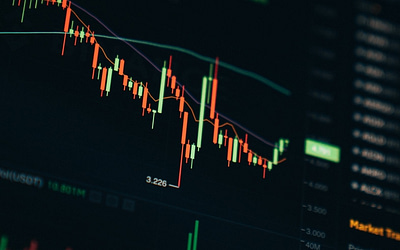In the world of trading, there is a common misguided message that traders should not have a directional bias. This idea is often promoted on social media and educational platforms, but it can be misleading. The truth is, every trade involves a bias. The very act of opening a position means that a trader is expecting the market to move in a certain direction. In this blog post, we will explore why having a trading bias is in fact essential for success, and how we can learn from the wisdom of experienced traders like Peter Brandt.
Peter Brandt, a highly successful trader who turned $30,000 into $80 million over the course of his career, has emphasized the importance of having a clear bias when trading. He believes that traders should have analytical clarity and trade their bias without fear or concern of being wrong. However, he also emphasizes that a trading system should be designed in a way that allows traders to objectively identify when market conditions have changed and their bias is no longer valid.
One of the key skills that professional traders master is the ability to be fluid within the framework of a rigid trading system. This means being able to formulate a strong opinion based on their analysis, but also being able to let go of that bias when MGI (market generated information) indicates that conditions have changed and the edge that their system offers no longer applies. This process requires a combination of analytical skills, emotional intelligence, and discipline.
Trading Bias is Critically Important
So, why is having a trading bias actually really important? Here are some reasons to consider:
- Provides a Clear Trading Plan: Having a bias gives traders a clear direction and plan for their trades. It helps them identify opportunities based on their analysis and makes their decision-making process more structured. Without a bias, traders may be more prone to impulsive decisions and emotional reactions to market fluctuations, which can lead to poor trading performance.
- Increases Confidence and Conviction: When traders have a bias, they are more likely to trade with confidence and conviction. They are more likely to stick to their trading plan and hold onto their positions during periods of market volatility. Confidence in their bias allows traders to withstand short-term fluctuations and focus on the long-term potential of their trades.
- Provides a Framework for Risk Management: Having a bias also helps traders manage their risk effectively. A clear bias allows traders to set appropriate stop-loss levels and manage their trade size accordingly. It helps them define their risk-reward ratio and make informed decisions about when to enter and exit a trade.
- Allows for Continuous Learning and Improvement: Having a bias provides a framework for continuous learning and improvement. When traders have a clear bias, they can analyze their trades based on the outcome of their bias and learn from their mistakes. This allows them to refine their trading strategy over time and become better traders.
Developing a Strong Bias but Maintaining an Objective Mindset
Having covered the reasons for having a bias it is however important to note that having a bias does not mean being stubborn or resistant to change. Market conditions can change quickly, and it’s crucial for traders to be able to objectively assess when their bias is no longer valid. This requires being open to new MGI and being willing to adjust their bias and trade plan accordingly.
So, how can traders develop a strong bias and maintain an objective mindset? Here are some tips:
- Develop a Solid Trading Plan: A well-defined trading plan is the foundation for developing a strong bias. It should include a clear set of rules for entering and exiting trades, as well as guidelines for risk management. Traders should stick to their trading plan and not deviate from it based on emotions or short-term market fluctuations.
- Stay Informed and Analyze Market Data: Traders should stay informed about market news, trends, and developments that may affect their bias. They should analyze market data objectively and use it to validate or adjust their bias. It’s important to rely on credible sources of information and avoid getting swayed by rumors or opinions on social media or other unverified platforms.
- Avoid Emotional Decision-making: Emotions can cloud judgment and lead to impulsive trading decisions. Traders should learn to manage their emotions and not let fear, greed, or other emotions dictate their trading decisions. Following a well-defined trading plan and sticking to it can help traders avoid emotional decision-making and stay focused on their bias.
- Be Open to New Information: Markets are dynamic and constantly changing. Traders should be open to new information and willing to adjust their bias if the market conditions change. This requires staying flexible and adaptable, and not being stubbornly attached to a bias that may no longer be valid. Being open to new information and adjusting the bias accordingly is a key trait of successful traders.
- Learn from Mistakes: Trading involves risks, and traders may face losses at times. It’s important to view losses as learning opportunities rather than failures. Traders should analyze their mistakes objectively, learn from them, and use the insights gained to refine their trading plan and bias. Continuous learning and improvement are crucial in the trading journey.
Conclusion
In conclusion, having a trading bias is essential for traders to develop a clear trading plan, increase confidence and conviction, manage risk effectively, and continuously learn and improve. Learning from experienced traders like Peter Brandt, who emphasize the importance of having a bias and maintaining an objective mindset, can provide valuable insights for aspiring traders. By developing a solid trading plan, staying informed, avoiding emotional decision-making, being open to new information, and learning from mistakes, traders can enhance their trading skills and increase their chances of success.
Remember, trading is a journey that requires patience, discipline, and continuous learning. It’s important to approach it with a long-term perspective and not get swayed by short-term market fluctuations or emotions. By having a well-defined trading plan, maintaining a strong bias, and staying objective, traders can navigate the markets with confidence and increase their chances of achieving their trading goals.





0 Comments